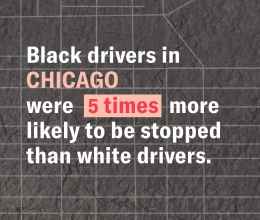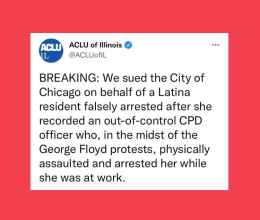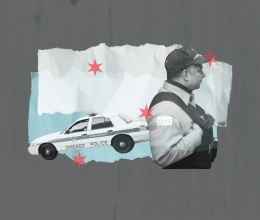
Since at least 2005, the Chicago Police Department has paid hundreds of thousands of dollars on invasive surveillance technology that is capable of gathering vast amounts of data about people’s cell phone locations and communications. This technology is commonly referred to as a Stingray, which is the name of the most well-known model of cell-site simulators.
These devices function by mimicking a cell phone tower, forcing all nearby phones into connecting to them and sending their unique identifying numbers. With some configurations, Stingrays can collect the contents of communications, such as texts, emails, contacts, and photos. The devices can be mounted in a car or a plane, or even fit in your hand.
The use of Stingrays raises constitutional concerns, as the collection and use of similar data has been found to violate the Fourth Amendment.
Under Illinois law, law enforcement agencies may only use Stingrays to identify, locate, or track the location of a cell phone or other communications device – and they must obtain a warrant that the target is engaged in a crime.
Unfortunately, the public cannot assess whether CPD is following this law. Nearly everything related to CPD’s Stingray has been shrouded in secrecy, even from the time of acquisition. CPD claims it has no internal policies relating to Stingrays, does not maintain a log of when it deploys Stingrays, and its disorganized recordkeeping makes requests for relevant information unduly burdensome.
Fortunately, we do have some information about CPD’s use of Stingrays. In addition to our own FOIA efforts, much of the information available is the result of efforts by other advocates who forced the City to turn over documents through FOIA and deposed various CPD personnel. All of these efforts brought to light important information about what CPD has purchased, how much it has spent, and how little internal accountability there is.
With this information, we have created a new report – Stingrays and the Chicago Police Department – to document what is known about the CPD’s use of this technology and to push for more transparency and accountability.
CPD must provide better oversight for this intrusive technology, and they must be more open with their records. We recommend that CPD, at a minimum:
- Maintain a log detailing each instance a cell-site simulator is used, including the date, time, location, purpose, intended target, court order or explanation as to why no court order was obtained, and date that all non-target data was deleted.
- Develop policies, guidelines, and training to ensure the use of cell-site simulators complies with the Fourth Amendment and state law, and protects the privacy rights of innocent people.
- Disclose the specific cell-site simulator equipment it has and how it is configured, as well as the amount of money spent on acquiring, updating, maintaining, and training officers on the equipment, including the kinds of funding used for these purposes.
- Disclose how effective this technology has been in apprehending and convicting the correct criminal suspects and the nature of their alleged crimes.
We call on Chicago’s Office of the Inspector General to investigate CPD’s policies, practices, and records relating to its use of cell-site simulator devices.



